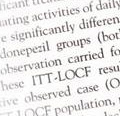Encyclopedia of Dietary Supplements
Second Edition
- Published
- June 2010
- ISBN
- 9781439819296
- Edition
- Second
- Pages
- 920
- Size
- 8 1/2 x 11 in
- Format
- Hardcover
- 241 illustrations
S-Adenosylmethionine
CSF, cerebrospinal fluid; GNMT, glycine N-methyltransferase; GSH, glutathione; HCC, hepatocellular carcinoma; Hcy, homocysteine; MAT, methionine adenosyltransferase; MTA, 5′-deoxy-5′-methylthioadenosine; MTHFR, 5,10-methylenetetrahydrofolate reductase; …
Chapter Opening
| Online Chapter
| Chapter PDF (297 KB)
| PDF Plus (301 KB)
Aloe Vera
Aloe vera is one of the oldest known medicinal herbs with a history of use that spans thousands of years. Today, aloe vera is cultivated and used in a large variety of commercial preparations. It is an economic driver in the food, dietary supplement, and …
Chapter Opening
| Online Chapter
| Chapter PDF (784 KB)
| PDF Plus (784 KB)
Androstenedione
Androstenedione (chemical name: 4-androstene-3,17-dione) is a steroid hormone produced primarily in the reproductive system and adrenal glands in men and women. It circulates in the bloodstream and is the immediate precursor to the potent anabolic/…
Chapter Opening
| Online Chapter
| Chapter PDF (438 KB)
| PDF Plus (438 KB)
l-Arginine
Arginine was first isolated in 1895 from animal horn. It is considered a nonessential amino acid under physiological conditions; however, it may be classified as semi-essential (or conditioned) in newborns, young children, or other circumstances …
Chapter Opening
| Online Chapter
| Chapter PDF (294 KB)
| PDF Plus (312 KB)
Astragalus
Astragalus root (Astragalus membranaceus and Astragalus mongholicus) (Figs. 1 and 2; flowers are shown in Fig. 2) is one of the most important plant products used in traditional Chinese medicine (TCM) for supporting immune resistance (; wei qi) and energy …
Chapter Opening
| Online Chapter
| Chapter PDF (951 KB)
| PDF Plus (954 KB)
Bilberry
Bilberry, Vaccinium myrtillus L., is a shrub with edible fruits that is native to Circumboreal regions from Europe to Asia as well as the Rocky Mountains in North America. Bilberries are related to other edible berries including blueberry, cranberry, …
Chapter Opening
| Online Chapter
| Chapter PDF (225 KB)
| PDF Plus (227 KB)
Biotin
Biotin is usually classified as a B-complex vitamin. “Biotin” is by far the most widely used term for this vitamin. However, discovery of biotin by different approaches has also led to names such as Bios IIB, protective factor X, vitamin H, coenzyme R, …
Chapter Opening
| Online Chapter
| Chapter PDF (357 KB)
| PDF Plus (362 KB)
Bitter Orange
Citrus aurantium (C. aurantium) is the Latin name for a plant commonly referred to as bitter orange, sour orange, Neroli, Chongcao, or Seville orange. It is a source of synephrine and several other biogenic amines, as well as other bioactive …
Chapter Opening
| Online Chapter
| Chapter PDF (313 KB)
| PDF Plus (318 KB)
Black Cohosh
Black cohosh is a native eastern North American plant that was used as traditional medicine by Native Americans. Extracts of the roots and rhizomes were used for analgesic, sedative, and anti-inflammatory properties. More recently, root and rhizome black …
Chapter Opening
| Online Chapter
| Chapter PDF (317 KB)
| PDF Plus (327 KB)
Blue-Green Algae (Cyanobacteria)
In Asia, Africa, and parts of Central/South America, naturally occurring green and blue-green algae have been harvested and consumed for their nutritive properties for centuries. In western cultures, for approximately 30 years, certain fresh water blue-…
Chapter Opening
| Online Chapter
| Chapter PDF (234 KB)
| PDF Plus (240 KB)
Boron
The element boron is essential for all higher plants in phylogenetic kingdom Viridiplantae (1) and at least some organisms in the phylogenetic kingdoms Eubacteria (2), Stramenopila (3), and Animalia (4,5). Specific species in the kingdom Fungi have a …
Chapter Opening
| Online Chapter
| Chapter PDF (1062 KB)
| PDF Plus (1068 KB)
Caffeine
Caffeine is undoubtedly one of the most widely consumed and studied dietary supplements because it is found in many products, including numerous foods and drugs. Approximately 50% of the U.S. adult population regularly uses one or more dietary supplements,…
Chapter Opening
| Online Chapter
| Chapter PDF (661 KB)
| PDF Plus (674 KB)
Calcium
Calcium is an alkaline earth, divalent, cationic element, abundant in the biosphere, and widely distributed in nature. It exhibits intermediate solubility. As a solid, calcium forms crystalline minerals with various anions. These salts make up the bulk of …
Chapter Opening
| Online Chapter
| Chapter PDF (370 KB)
| PDF Plus (373 KB)
l-Carnitine, Acetyl-l-Carnitine, and Propionyl-l-Carnitine
l-Carnitine [known chemically as R(−)-β-hydroxy-γ-(N,N,N-trimethylammonio)butyrate; molecular weight: 161.2 g/mol] is a water-soluble quaternary amine that facilitates lipid metabolism. Only the L isomer is biologically active. Humans acquire varying …
Chapter Opening
| Online Chapter
| Chapter PDF (355 KB)
| PDF Plus (362 KB)
β-Carotene
β-Carotene (molecular formula: C40H56) is a fat-soluble plant pigment found in red, orange, and yellow vegetables and fruits. β-Carotene is converted to vitamin A (retinal, retinol, and retinoic acid), when it is in short supply in the body. It is an …
Chapter Opening
| Online Chapter
| Chapter PDF (270 KB)
| PDF Plus (281 KB)
Carotenoids Overview
Carotenoids are a family of compounds of over 600 fat-soluble plant pigments, which provide much of the color seen in nature. For example, carotenoids are responsible for the red color of tomatoes and the orange color of carrots. Apart from their …
Chapter Opening
| Online Chapter
| Chapter PDF (175 KB)
| PDF Plus (175 KB)
Cascara Sagrada
Rhamnus purshiana De Candolle is the largest species of buckthorn, occasionally growing up to 15 m in height; however, it is more commonly a large shrub or small tree (5–10 m) (1,2,3,4,5). Rhamnus purshiana is native to the Pacific Northwest United States …
Chapter Opening
| Online Chapter
| Chapter PDF (167 KB)
| PDF Plus (172 KB)
Chaste Tree
Vitex agnus castus L. (Verbenaceae), commonly referred to as chaste tree or chasteberry, is a small shrubby tree, approximately 1 to 6 m in height and native to the Mediterranean region and Asia (1,2). The tree is also widely cultivated in warm temperate …
Chapter Opening
| Online Chapter
| Chapter PDF (299 KB)
| PDF Plus (299 KB)
Choline
Choline, an essential nutrient for humans, is consumed in many foods. It is a constituent of all cell membranes and is necessary for growth and development. Also, as the major precursor of betaine, it is used by the kidney to maintain water balance and by …
Chapter Opening
| Online Chapter
| Chapter PDF (366 KB)
| PDF Plus (375 KB)
Chondroitin Sulfate
Osteoarthritis (OA) is the most common arthropathy worldwide and a significant cause of morbidity and disability, especially in the elderly (1). Both biomechanical forces and biochemical processes are important in its pathogenesis, which is characterized …
Chapter Opening
| Online Chapter
| Chapter PDF (221 KB)
| PDF Plus (221 KB)
Chromium
Chromium (Cr) is the 13th most common element in the earth’s crust and 26th most common element in seawater. It is present in the environment in oxidation states ranging from −2 to +6 but principally as metallic (Cr0), trivalent (+3), and hexavalent (+6) …
Chapter Opening
| Online Chapter
| Chapter PDF (338 KB)
| PDF Plus (343 KB)
Coenzyme Q10
Coenzyme Q is a lipid with broad distribution in nature, present in plants, bacteria, fungi, and all animal tissues. Coenzyme Q refers to a general structure composed of a nucleus, that is, 2,3-dimethoxy-5-methylbenzoquinone, and, substituted at position …
Chapter Opening
| Online Chapter
| Chapter PDF (303 KB)
| PDF Plus (315 KB)
Conjugated Linoleic Acid
Conjugated linoleic acid (CLA) consists of a group of positional and geometric fatty acid (FA) isomers of linoleic acid (C18:2; cis-9, cis-12 octadecadienoic acid). CLA isomers are found naturally in ruminant meats and dairy products due to …
Chapter Opening
| Online Chapter
| Chapter PDF (464 KB)
| PDF Plus (465 KB)
Copper
Since the discovery in 1928 that copper is an essential nutrient, hundreds of experiments to clarify its function have been performed with several species of animals and, under very controlled conditions, with adult human volunteers. People respond to …
Chapter Opening
| Online Chapter
| Chapter PDF (231 KB)
| PDF Plus (232 KB)
Cordyceps
ATP, adenosine triphosphate; GM-CSF, granulocyte macrophage colony-stimulating factor; GRAS, generally recognized as safe; HDL, high-density lipoprotein; IFN, interferon; Ig, immunoglobulin; IL, interleukin; iNOS, calcium-insensitive nitric oxide …
Chapter Opening
| Online Chapter
| Chapter PDF (598 KB)
| PDF Plus (599 KB)
Cranberry
Cranberry (Vaccinium macrocarpon Aiton) is a native plant of North America. Today, it is one of the top selling herbal supplements in the U.S. market. Juice and dietary supplements derived from the berry reportedly exhibit various health benefits, …
Chapter Opening
| Online Chapter
| Chapter PDF (239 KB)
| PDF Plus (262 KB)
Creatine
Creatine (Cr)—methylguanidino acetic acid—is a naturally occurring compound that was first described by Chevreul in 1832. Its name is derived from the Greek word kreas (flesh). Creatine is found in abundance in skeletal muscle (red meat) and fish. It is …
Chapter Opening
| Online Chapter
| Chapter PDF (270 KB)
| PDF Plus (275 KB)
Dong Quai
The root of dang gui (Angelica sinensis; also known as dong quai; Fig. 1) is one of the primary botanicals used in traditional Chinese medicine (TCM) for the treatment of gynecological and circulatory conditions. In TCM its primary use is to both build …
Chapter Opening
| Online Chapter
| Chapter PDF (651 KB)
| PDF Plus (657 KB)
Dehydroepiandrosterone
DHEA is the acronym used to designate the hormone “dehydroepiandrosterone,” also referred to as “prasterone.” The chemical name for DHEA is 5-androsten-3β-ol-17-one (Fig. 1).
Chapter Opening
| Online Chapter
| Chapter PDF (299 KB)
| PDF Plus (312 KB)
Echinacea Species
Echinacea is a herbal medicine that has been used for centuries, customarily as a treatment for common cold, coughs, bronchitis, upper respiratory infections (URIs), and inflammatory conditions. It belongs to Heliantheae tribe of the Asteraceae (…
Chapter Opening
| Online Chapter
| Chapter PDF (1276 KB)
| PDF Plus (1289 KB)
Elderberry
Sambucus nigra Linnaeus is a small deciduous tree, which grows widely in Europe, Western and Central Asia, and North Africa. It is often planted as a decorative tree in gardens and public parks. The English name Elder comes from the Anglo-Saxon word “aeld,…
Chapter Opening
| Online Chapter
| Chapter PDF (876 KB)
| PDF Plus (879 KB)
Eleuthero
Eleuthero is obtained from Eleutherococcus senticosus (Rupr. et Maxim.) Maxim. [syn: Acanthopanax senticosus (Rupr. et Maxim.) Harms], a member of the ivy family (Araliaceae). Preparations of the dried root and rhizome or stems have an approximate 2,000-…
Chapter Opening
| Online Chapter
| Chapter PDF (257 KB)
| PDF Plus (260 KB)
Ephedra
Ephedra (Ma huang) is the common name for a herbal product used in traditional Chinese medicine. It comprises the aerial parts of three principal plant species: Ephedra sinica Stapf, E. equisetina Bunge, and E. intermedia var. tibetica Stapf (1,2,3). The …
Chapter Opening
| Online Chapter
| Chapter PDF (166 KB)
| PDF Plus (170 KB)
Evening Primrose
Intake of dietary fat, particularly essential fatty acids, is known to influence human health and disease status. Evening primrose oil (EPO), a source of γ-linolenic acid, has received much attention for its possible therapeutic effects on inflammatory …
Chapter Opening
| Online Chapter
| Chapter PDF (300 KB)
| PDF Plus (301 KB)
Feverfew
Feverfew (Tanacetum parthenium) has been used since antiquity for a variety of medicinal purposes, prominent among them being alleviation of fever, headache, and women’s ailments. Claims of efficacy are almost invariably anecdotal. However, over the past …
Chapter Opening
| Online Chapter
| Chapter PDF (435 KB)
| PDF Plus (436 KB)
Flaxseed
Flax (Linum usitatissimum) or linseed is an ancient crop, which has been grown for fiber (linen) and nutritional and industrial use. Although flax is used for these purposes belong to the same Linum species, they differ in varieties. In Europe, “flax” is …
Chapter Opening
| Online Chapter
| Chapter PDF (406 KB)
| PDF Plus (411 KB)
Folate
Folate is a dietary essential B-complex vitamin required for human health. It functions as a cofactor in the synthesis of nucleotides required for DNA synthesis and in amino acid metabolism. The classic symptom of folate deficiency is megaloblastic (large …
Chapter Opening
| Online Chapter
| Chapter PDF (587 KB)
| PDF Plus (588 KB)
French Maritime Pine
Pycnogenol® is the registered trade name for a special standardized extract from the bark of the French maritime pine (Pinus pinaster ssp. atlantica), distributed exclusively by Horphag Research, U.K. The spray-dried, powdered extract is marketed …
Chapter Opening
| Online Chapter
| Chapter PDF (635 KB)
| PDF Plus (639 KB)
Garcinia
Garcinia cambogia is the Latin name for a plant that bears the tamarind fruit and thrives on the Indian subcontinent and in western Sri Lanka. The dried rind of the tamarind fruit, Malabar tamarind, contains (–)-hydroxycitric acid (HCA), the one isomer of …
Chapter Opening
| Online Chapter
| Chapter PDF (348 KB)
| PDF Plus (349 KB)
Garlic
Garlic (Allium sativum) is revered throughout the world as part of a healthful diet (1,2). Reference to garlic was made about 5000 years ago in Egyptian and Indian writings. According to early transcripts from Egypt, Greece, Rome, China, and India, garlic …
Chapter Opening
| Online Chapter
| Chapter PDF (664 KB)
| PDF Plus (677 KB)
Ginger
Ginger is a popular spice and its world production is estimated at 100,000 tons annually, of which 80% is grown in China (1). In addition to its long history of use as a spice, references to ginger as a medicinal agent can be found in ancient Chinese, …
Chapter Opening
| Online Chapter
| Chapter PDF (218 KB)
| PDF Plus (219 KB)
Ginkgo
The tree Ginkgo biloba L. has a long history of use in traditional Chinese medicine. The ginkgo tree is classified in its own family and order, and holds a special position in evolutionary plant history because it provides a connection between the …
Chapter Opening
| Online Chapter
| Chapter PDF (817 KB)
| PDF Plus (818 KB)
Ginseng, American
Ginseng has been widely used for thousands of years as a traditional medicine in many oriental countries. During the past few decades, ginseng roots and their extracts have also become increasingly popular in the United States and Europe as dietary …
Chapter Opening
| Online Chapter
| Chapter PDF (188 KB)
| PDF Plus (206 KB)
Ginseng, Asian
Recent revolutions in life science and technology including genomics, proteomics, nanotechnology, and highly sensitive chemical analysis methods have enriched our knowledge of Panax ginseng (P. ginseng; Fig. 1) and improved our understandings of this …
Chapter Opening
| Online Chapter
| Chapter PDF (651 KB)
| PDF Plus (665 KB)
Glucosamine
Glucosamine (2-amino-2-deoxy-d-glucose) is a naturally occurring substance derived from the exoskeletons of arthropods. Glucosamine-6-phosphate is a precursor in the biosynthesis of the glycosaminoglycans (GAGs) found in cartilage. Premature loss of …
Chapter Opening
| Online Chapter
| Chapter PDF (322 KB)
| PDF Plus (322 KB)
Glutamine
Glutamine is the most abundant amino acid in the body, due to its relatively high concentration in the blood and comparatively large stores of free glutamine in muscle tissue. It is found in all proteins, and thus any protein source provides glutamine in …
Chapter Opening
| Online Chapter
| Chapter PDF (284 KB)
| PDF Plus (284 KB)
Goldenseal
Goldenseal (Hydrastis canadensis L.) is a plant native to North America and is used in its herbal traditions. A principal active ingredient, the alkaloid berberine, is shared with several medicinal plants used in traditional Asian medicines. Traditional …
Chapter Opening
| Online Chapter
| Chapter PDF (519 KB)
| PDF Plus (523 KB)
Grape Seed Extract
Grape seed extract (GSE) refers to mixtures of catechin monomers, procyanidin oligomers, and procyanidin polymers extracted from Vitis vinifera seeds. These bioactive components are reducing agents and hydrogen-donating antioxidants. Their intrinsic …
Chapter Opening
| Online Chapter
| Chapter PDF (518 KB)
| PDF Plus (527 KB)
Green Tea Polyphenols
Tea (Camellia sinensis, Theaceae) is second only to water in worldwide popularity as a beverage. The three major types of tea—green, oolong, and black—differ in terms of the manufacture and chemical composition. There are numerous studies in humans, …
Chapter Opening
| Online Chapter
| Chapter PDF (347 KB)
| PDF Plus (355 KB)
Hawthorn
Hawthorn is one of the most popular herbal medicines for the heart worldwide. In Europe, particularly in Germany, Austria, and Switzerland, hawthorn preparations are eligible for marketing authorization as drugs for the treatment of mild forms of heart …
Chapter Opening
| Online Chapter
| Chapter PDF (364 KB)
| PDF Plus (365 KB)
5-Hydroxytryptophan
5-Hydroxytryptophan (5-HTP) is the immediate precursor for the neurotransmitter, serotonin. 5-HTP is produced by extraction from the seeds of the African plant Griffonia simplicifolia and, in the United States, is commercially available for purchase, …
Chapter Opening
| Online Chapter
| Chapter PDF (274 KB)
| PDF Plus (275 KB)
Iron
Iron is one of the essential micronutrients and, as such, is required for growth, development, and normal cellular functioning. In contrast to some other micronutrients such as water-soluble vitamins, there is a significant danger of toxicity if excessive …
Chapter Opening
| Online Chapter
| Chapter PDF (307 KB)
| PDF Plus (307 KB)
Isoflavones
Isoflavones are a subclass of the rather ubiquitous flavonoids but by comparison have a much more limited distribution in nature. The primary dietary sources of isoflavones are soybeans and soyfoods. The literature is replete with declarations that many …
Chapter Opening
| Online Chapter
| Chapter PDF (367 KB)
| PDF Plus (368 KB)
Isothiocyanates
Isothiocyanates (ITCs) are the hydrolysis products of a class of naturally occurring plant secondary metabolites called glucosinolates that are present in our diet in vegetables belonging to the plant genus Brassica (Family Brassicaceae, syn. Cruciferae), …
Chapter Opening
| Online Chapter
| Chapter PDF (328 KB)
| PDF Plus (329 KB)
Kava
Kava, the common name of the plant Piper methysticum G. Forst., is native to many South Pacific islands. The term kava and the variant kawa are used for both the plant and the traditional beverage prepared from its roots. However, some other names or …
Chapter Opening
| Online Chapter
| Chapter PDF (1137 KB)
| PDF Plus (1153 KB)
Lactobacilli and Bifidobacteria
The lower human gastrointestinal tract hosts complex and diverse microbial communities that have been the most extensively studied body habitat in attempts to define microbial diversity in normal health and predisposition to disease. The distal …
Chapter Opening
| Online Chapter
| Chapter PDF (1383 KB)
| PDF Plus (1384 KB)
Licorice
Licorice (Glycyrrhiza glabra and other related species) is one of the most widely used medicinal plants, employed in traditional formulas since antiquity. It is a perennial herb native to the Mediterranean region and central and southwestern Asia, and is …
Chapter Opening
| Online Chapter
| Chapter PDF (593 KB)
| PDF Plus (593 KB)
α-Lipoic Acid/Thioctic Acid
Lipoic acid, also called thioctic acid, has been known as an essential growth factor for certain microorganisms for half a century and for most of this time, identified as a covalently linked cofactor for α-keto acid decarboxylating enzymes. With humans …
Chapter Opening
| Online Chapter
| Chapter PDF (544 KB)
| PDF Plus (558 KB)
Lutein
Lutein [(3R,3′R,6′R)-β,e-caroten-3,3′-diol] is a polar lipophilic dihydroxycarotenoid with a molecular weight of 568.871. It contains a conjugated polyene chain and two hydroxylated ionone rings. The compound is biosynthesized by hydroxylation of α-…
Chapter Opening
| Online Chapter
| Chapter PDF (1036 KB)
| PDF Plus (1037 KB)
Lycopene
Observational and experimental evidence strongly implicates dietary variables as critical determinants of human health and disease risk. Among the many dietary variables concerning the promotion of optimal health, a diet rich in a variety of fruits and …
Chapter Opening
| Online Chapter
| Chapter PDF (599 KB)
| PDF Plus (629 KB)
Maca
Maca is a dietary supplement derived from the processed tuberous root of Lepidium meyenii Walpers (family Brassicaceae; common names: Peruvian ginseng, maka, mace, maca-maca, maino, ayak chichira, ayuk willku, pepperweed) (1). The genus Lepidium contains …
Chapter Opening
| Online Chapter
| Chapter PDF (449 KB)
| PDF Plus (450 KB)
Magnesium
Magnesium is an essential nutrient and is vital for numerous biologic processes in the body. This entry reviews the biochemistry, physiology, and homeostasis of magnesium. Dietary magnesium intake and requirements as well as current dietary …
Chapter Opening
| Online Chapter
| Chapter PDF (343 KB)
| PDF Plus (350 KB)
Melatonin
Melatonin is a hormone, like the estrogens and testosterone: It is synthesized in the pineal gland and secreted into the blood and cerebrospinal fluid. It conveys signals to distant organs, principally the brain, which affect the synthesis of second …
Chapter Opening
| Online Chapter
| Chapter PDF (547 KB)
| PDF Plus (548 KB)
Milk Thistle
Milk thistle [Silybum marianum (L.) Gaertn. (Asteraceae); also Carduus marianus L.] (Fig. 1) is a herb widely used in Europe for the treatment of liver and biliary disorders. Although milk thistle is the most commonly used name for the herb, other names …
Chapter Opening
| Online Chapter
| Chapter PDF (592 KB)
| PDF Plus (593 KB)
Niacin
ADPR/P, adenosine diphosphate ribose/phosphate; ART, mono-ADP-ribosyltransferase; NAAD/NAADP, nicotinic acid adenine dinucleotide/nicotinic acid adenine dinucleotide phosphate; NE, niacin equivalents; NMNAT1–3/NaMNAT, nicotinamide/nicotinic acid …
Chapter Opening
| Online Chapter
| Chapter PDF (347 KB)
| PDF Plus (353 KB)
Noni
Morinda citrifolia L. (Rubiaceae) (noni) is an important medicinal plant of South Asian origin. All parts of this species have been used traditionally in regions such as South and Southeast Asia, Polynesia, Northeastern Australia, and the Caribbean for a …
Chapter Opening
| Online Chapter
| Chapter PDF (313 KB)
| PDF Plus (326 KB)
Omega-3 Fatty Acids
Long-chain, highly unsaturated fatty acids (HUFA) of the omega-3 (ω-3 or n-3) family include eicosapentaenoic acid (EPA) and docosapentaenoic acid (DPA), which are 20- and 22-carbon molecules, respectively, with five double bonds (Δ5, -8, -11, -14, -17). …
Chapter Opening
| Online Chapter
| Chapter PDF (735 KB)
| PDF Plus (756 KB)
Omega-6 Fatty Acids
The term ‘‘essential fatty acids’’ (EFAs) applies to vitamin-like fatty acids required in the diet and necessary for animal and human health (1). The two types of EFAs, omega-6 (ω-6) and omega-3 (ω-3), have similar biochemical properties that can lead …
Chapter Opening
| Online Chapter
| Chapter PDF (1145 KB)
| PDF Plus (1153 KB)
Pancreatic Enzymes
Pancreatic enzymes are critical for the normal physiological digestion of fats, proteins, and carbohydrates. Many additional conditions and molecules throughout the digestive system complement and assist in the digestion of essential nutrients. As occurs …
Chapter Opening
| Online Chapter
| Chapter PDF (151 KB)
| PDF Plus (153 KB)
Pantothenic Acid
Pantothenic acid is a water-soluble B vitamin (vitamin B5) that is not synthesized by animals but is widely available in the diet. Pantothenic acid is metabolized to two important cofactors for enzymes: coenzyme A (CoA) and acyl carrier protein (ACP). …
Chapter Opening
| Online Chapter
| Chapter PDF (331 KB)
| PDF Plus (339 KB)
Pau d’Arco
Pau d’arco and lapachol are the Portuguese and Spanish names used to identify about 26 species of shrubs and trees of the genus Tabebuia (Bignoniaceae). These species are indigenous to the American tropics from Mexico to southern South America, with the …
Chapter Opening
| Online Chapter
| Chapter PDF (696 KB)
| PDF Plus (703 KB)
Phosphorus
Phosphorus is the name of the element (number 32 of the periodic table), but phosphorus does not exist in biological tissues or foods as such because of its chemical reactivity; rather it exists almost exclusively as phosphate anions. Most of these anions …
Chapter Opening
| Online Chapter
| Chapter PDF (329 KB)
| PDF Plus (330 KB)
Polyphenols Overview
According to chemical nomenclature, a “phenolic” compound contains at least one aromatic ring bearing a hydroxyl (-OH) group and thus, a “polyphenol” contains multiple aromatic rings and hydroxyl groups (1,2,3). Phenolics/polyphenols are secondary …
Chapter Opening
| Online Chapter
| Chapter PDF (212 KB)
| PDF Plus (213 KB)
Proanthocyanidins
Proanthocyanidins, also named condensed tannins, are oligomers and polymers of monomeric flavonoids. More specifically, they are polyflavans: condensed molecules of those flavonoids with a saturated “C” ring (Fig. 1A). Fifteen subclasses of …
Chapter Opening
| Online Chapter
| Chapter PDF (378 KB)
| PDF Plus (393 KB)
Pygeum
Pygeum africanum (also called Prunus africana) is a tree belonging to the Rosaceae family. It grows in tropical and humid equatorial mountain zones, at altitudes between 1000 and 2400 m. The tree is commonly found in countries such as Cameroon, Kenya, …
Chapter Opening
| Online Chapter
| Chapter PDF (171 KB)
| PDF Plus (176 KB)
Quercetin
Quercetin (3′,4′,5,7-tetrahydroxyflavonol, 3,3′,4′,5,7-pentahydroxyflavone, 2-(3,4-dihydroxy-phenyl)-3,5,7-trihydroxy-chromen-4-one, 2-(3,4-dihydroxyphenyl)-3,5,7-trihydroxy-4H-1-benzopyran-4-one) is a flavonol belonging to a class of naturally occurring …
Chapter Opening
| Online Chapter
| Chapter PDF (237 KB)
| PDF Plus (277 KB)
Red Clover
Red clover (RC) is a herbaceous perennial plant that inhabits temperate and subtropical areas throughout the world. Native Americans traditionally valued RC for treatment of external skin problems and lung, nervous, and reproductive system ailments. …
Chapter Opening
| Online Chapter
| Chapter PDF (686 KB)
| PDF Plus (695 KB)
Reishi
Reishi or Ling Zhi (Ganoderma lucidum), a popular medicinal mushroom, has been used in China, Japan, and Korea for the promotion of longevity and health since ancient times. Over the years, fables and legends revered G. lucidum as a “heavenly herb,” which …
Chapter Opening
| Online Chapter
| Chapter PDF (725 KB)
| PDF Plus (735 KB)
Riboflavin
New metabolic roles for riboflavin are continually emerging since its discovery in the early part of the 20th century (1,2,3). We are now defining the mechanisms of action of riboflavin at the molecular, physiological, and clinical levels. In particular, …
Chapter Opening
| Online Chapter
| Chapter PDF (345 KB)
| PDF Plus (355 KB)
Saw Palmetto
Saw palmetto fruit extracts are frequently consumed for relief of the lower urinary tract symptoms (LUTS) associated with benign prostatic hyperplasia (BPH). Clinical trials of saw palmetto for symptom relief of LUTS have yielded mixed results that have …
Chapter Opening
| Online Chapter
| Chapter PDF (710 KB)
| PDF Plus (711 KB)
Selenium
Selenium (Se) is an essential micronutrient that is incorporated into the primary structure of proteins in the form of selenocysteine. Selenoproteins facilitate redox reactions that underlie a number of biochemical processes. Among them are protection …
Chapter Opening
| Online Chapter
| Chapter PDF (263 KB)
| PDF Plus (264 KB)
Shiitake
Shiitake mushroom, the common Japanese name for Lentinus edodes (Fig. 1), derives from the mushroom associated with the shii tree (Castanopsis cuspidate Schottky) and take, the Japanese word for mushroom. Because Japan was the world leader in the …
Chapter Opening
| Online Chapter
| Chapter PDF (886 KB)
| PDF Plus (886 KB)
St. John’s Wort
St. John’s wort (SJW), Hypericum perforatum L. (Hypericaceae) is a perennial plant and one of the best known and well researched of the western herbals. Though clearly a favorite medicinal among herbalists and European physicians, concerns have arisen …
Chapter Opening
| Online Chapter
| Chapter PDF (665 KB)
| PDF Plus (685 KB)
Taurine
Taurine, a conditionally essential β-aminosulfonic acid, is a nutrient obtained primarily from meat and seafood. Recently, as we gain a better understanding of its roles in the human body not only for bile acid synthesis and fat digestion but also in the …
Chapter Opening
| Online Chapter
| Chapter PDF (805 KB)
| PDF Plus (807 KB)
Thiamin
RDA, recommended dietary allowances; THTR-1, thiamin transporter 1; THTR-2, thiamin transporter 2; TMP, thiamin monophosphate; TPP, thiamin pyrophosphate; TRMA, thiamin responsive megaloblastic anemia; TTP, thiamin triphosphate
Chapter Opening
| Online Chapter
| Chapter PDF (387 KB)
| PDF Plus (389 KB)
Turmeric
The various names by which turmeric is known reflect both its characteristic golden color and its cultural and historical importance as a spice and medicine [“yellow root” or “Indian saffron”; “Curcuma”, a latinization of an Arabic term for saffron (al-…
Chapter Opening
| Online Chapter
| Chapter PDF (316 KB)
| PDF Plus (341 KB)
Valerian
Valerian or valerian root consists of the underground organs (root and rhizome, with or without stolons) of Valeriana officinalis L. and a number of other Valeriana species (family Valerianaceae). It has been used by people of different cultures since …
Chapter Opening
| Online Chapter
| Chapter PDF (343 KB)
| PDF Plus (343 KB)
Vitamin A
AI, adequate intake; CRABP, cellular retinoic acid–binding protein; CRBP, cellular retinol-binding protein; DRI, dietary reference intake(s); EAR, estimated average requirement; IOM, Institute of Medicine; RA, retinoic acid, RAR, retinoic acid receptor; …
Chapter Opening
| Online Chapter
| Chapter PDF (777 KB)
| PDF Plus (778 KB)
Vitamin B6
4-PA, 4-pyridoxic acid; PL, pyridoxal; PLP, pyridoxal-5’-phosphate; PN, pyridoxine; PNP, pyridoxine-5’-phosphate; PM, pyridoxamine; PMP, pyridoxamine-5’-phosphate.
Chapter Opening
| Online Chapter
| Chapter PDF (433 KB)
| PDF Plus (463 KB)
Vitamin B12
AdoCbl, 5′-deoxyadenosylcobalamin; AI, Adequate Intake; ASF, animal source foods; Cbl, cobalamin; CNCbl, cyanocobalamin; CNS, central nervous system; DRI, Dietary Recommended Intake; Hc, haptocorrin; Hcy, homocysteine; IF, intrinsic factor; MCV, mean cell …
Chapter Opening
| Online Chapter
| Chapter PDF (376 KB)
| PDF Plus (377 KB)
Vitamin C
AI, adequate intake; AUC, area under curve; DHA, dehydroascorbic acid; DRI, dietary reference intake; EAR, estimated average requirement; GLUT, facilitated glucose transporter; HIF, hypoxia inducible factor; IV, intravenous; LDL, low density lipoprotein; …
Chapter Opening
| Online Chapter
| Chapter PDF (981 KB)
| PDF Plus (981 KB)
Vitamin D
Vitamin D, a compound long known to be essential for bone health, holds a unique position in the realm of nutrients—that is, although this compound is clearly a nutrient, it is also a prohormone. Although vitamin D is normally produced by ultraviolet (UV) …
Chapter Opening
| Online Chapter
| Chapter PDF (357 KB)
| PDF Plus (357 KB)
Vitamin E
Vitamin E was discovered in 1922 by Evans and Bishop (1) and was described as a dietary factor required for reproduction in rodents. Since then, great advances have been made in our understanding of the antioxidant and nonantioxidant roles of vitamin E in …
Chapter Opening
| Online Chapter
| Chapter PDF (322 KB)
| PDF Plus (365 KB)
Vitamin K
Vitamin K activity is exhibited by phylloquinone, found in green plants, and by a series of menaquinones, which are synthesized by a limited number of anaerobic bacteria. The metabolic role of this vitamin is as a substrate for an enzyme, the vitamin K-…
Chapter Opening
| Online Chapter
| Chapter PDF (391 KB)
| PDF Plus (392 KB)
Yohimbe
Yohimbe is a West African evergreen tree, Pausinystalia johimbe (K. Schum.) Pierre ex Beille, a member of the madder family (Rubiaceae). Teas made from the bark have been used in Africa as aphrodisiacs and for other purposes. The bark contains a series of …
Chapter Opening
| Online Chapter
| Chapter PDF (246 KB)
| PDF Plus (247 KB)
Zinc
Zinc is the most abundant intracellular trace element. It is present in every living cell in the body and has many diverse biological functions. Because zinc is a component of many enzymes, it is involved in the synthesis and degradation of carbohydrates, …
Chapter Opening
| Online Chapter
| Chapter PDF (272 KB)
| PDF Plus (272 KB)








